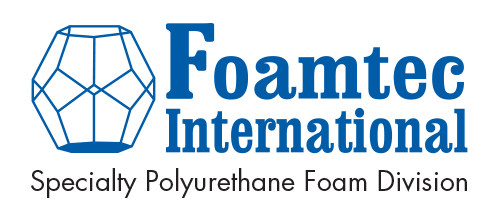
Automatic & Manual Lamination
We utilize both automatic and manual lamination techniques to enhance the performance and functionality of our foam products. This dual approach allows us to meet diverse customer requirements and maintain high standards of quality and precision in our finished products.
Lamination in manufacturing is a process used to create a composite material, which involves the combination of multiple layers of different materials. These layers are then sealed together using heat, pressure, or adhesives to form a single structure. The purpose of this process is often to combine the benefits of different materials in the final product.
Laminating polyurethane foam to other products is common in many industries including the packaging, construction, automotive and electronics industries.
Laminating polyurethane foam to other raw materials can greatly enhance the physical properties of the laminated product. This process often improves the strength, stability, appearance, lifespan, and resistance to various environmental factors. However, it can also add to the complexity and cost of the manufacturing process.
Automatic Lamination Vs. Manual Lamination
Both automatic and manual lamination methods are used in various manufacturing processes, depending on the scale, cost, and precision requirements of the application. Here's a brief comparison between the two:
Automatic Lamination:
Efficiency: Automated laminating machines can process a large number of items in a relatively short period. They are suitable for high-volume, large-scale manufacturing processes.
Consistency & Quality: These machines can provide consistent results in terms of quality and precision, minimizing human error.
Cost: While the initial investment for automated lamination equipment can be high, the operational costs can be relatively lower in the long run due to high efficiency and reduced labor costs.
Skill Requirement: Less skilled labor is required as the machine does most of the work.
Manual Lamination:
Efficiency: Manual lamination processes can be slower and less efficient, as they are highly dependent on the skills and speed of the worker.
Consistency & Quality: Manual lamination can result in variability in the final product due to human error. However, in some specialized applications, manual lamination might offer greater control over the process.
Cost: Manual lamination can have lower initial costs but higher operational costs due to labor. In low-volume applications or where the required equipment is simple, this method could be cost-effective.
Skill Requirement: This method requires skilled labor, as the quality of the final product depends on the worker's expertise and attentiveness.
Overall, the choice between automatic and manual lamination would depend on factors such as the scale of production, cost, precision requirements, and labor availability. For large-scale, mass-production scenarios, automatic lamination is generally the preferred choice, while manual lamination may be used for low-volume or specialized applications.

